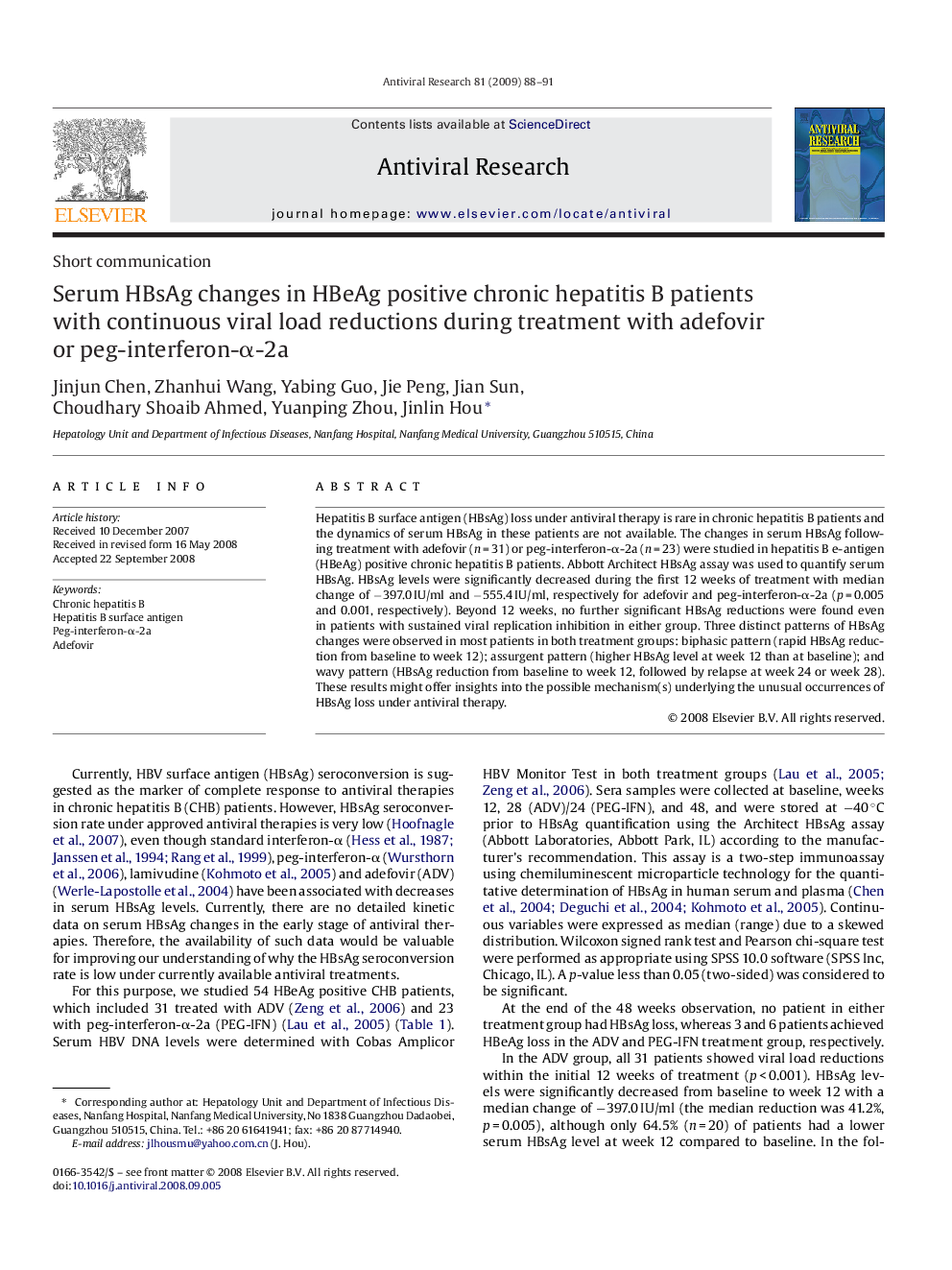| Article ID | Journal | Published Year | Pages | File Type |
|---|---|---|---|---|
| 2510989 | Antiviral Research | 2009 | 4 Pages |
Hepatitis B surface antigen (HBsAg) loss under antiviral therapy is rare in chronic hepatitis B patients and the dynamics of serum HBsAg in these patients are not available. The changes in serum HBsAg following treatment with adefovir (n = 31) or peg-interferon-α-2a (n = 23) were studied in hepatitis B e-antigen (HBeAg) positive chronic hepatitis B patients. Abbott Architect HBsAg assay was used to quantify serum HBsAg. HBsAg levels were significantly decreased during the first 12 weeks of treatment with median change of −397.0 IU/ml and −555.4 IU/ml, respectively for adefovir and peg-interferon-α-2a (p = 0.005 and 0.001, respectively). Beyond 12 weeks, no further significant HBsAg reductions were found even in patients with sustained viral replication inhibition in either group. Three distinct patterns of HBsAg changes were observed in most patients in both treatment groups: biphasic pattern (rapid HBsAg reduction from baseline to week 12); assurgent pattern (higher HBsAg level at week 12 than at baseline); and wavy pattern (HBsAg reduction from baseline to week 12, followed by relapse at week 24 or week 28). These results might offer insights into the possible mechanism(s) underlying the unusual occurrences of HBsAg loss under antiviral therapy.
